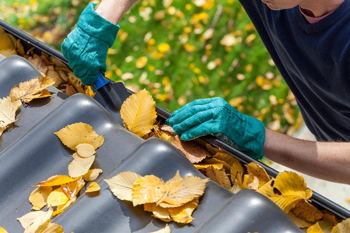Q: Help! I know I need to prepare my home for the upcoming cold weather, but I don’t know where to start. What do I need to do?
A: As soon as you see the seasonal aisles at your favorite superstores filling with Halloween paraphernalia, you know “Old Man Winter” will be creeping up on us before you can say “Boo!”
This year, be prepared. Keep your home warm and safe this winter by following our comprehensive to-do list before the real cold sets in.
1. Seal your home
Don’t let those brutal winds inside! Your home is your fortress against the cold, so make it as airtight as possible. Give your home a quick run-through, checking for visible and hidden drafts. You can do this by holding a lit candle near the following areas:
- Windows
- Doors
- Vents and fans
- Plumbing areas
- Air conditioners
- Mail chutes
- Electrical and gas lines
If the candle flickers, you’ve got a draft.
Seal up all holes and reinforce existing points of entry with weather stripping. You can pick some up in your local hardware store. Follow the simple instructions and you’ll be keeping that cold air out and the warm air inside – right where it belongs.
You can also caulk windows and doors to make sure they’re truly sealed against the cold.
2. Clean your gutters
If your gutters are clogged with sodden leaves, they can freeze up and block the drainage, allowing melting ice and snow to slowly seep into your roof and cause excessive damage. You can do this chore on your own, or hire a professional roofer to get the job done for you for under $100.
3. Invest in a roof rake
And here you thought raking was strictly for autumn! If you live in an area that sees lots of snow each winter, your roof can be sitting under several feet of snow for a few weeks at a time. All of that snow can get heavy, causing your roof to collapse.
Invest in a roof rake that will help you clear the snow off your roof when it really starts piling up. You don’t want that roof falling in during the coldest time of the year.
4. Reverse your ceiling fans
Flick the reverse switch on your ceiling fans to make the blades spin in a clockwise direction instead of counterclockwise. This way, the fans will produce an updraft, which will push the rising hot air down so it can keep the entire room warm.
This is especially crucial in rooms that have high ceilings, or are even two stories high. You might find that putting your ceiling fans to work allows you to crank down the thermostat by a couple degrees to trim your energy bill this winter.
5. Prune your trees
Take a walk around your home’s exterior and inspect all trees and bushes near its façade. Look for low-hanging or loose branches that are close to your house. If you find any, prune them now so they don’t end up cracking from heavy snow or wind and causing damage to your home.
6. Take inventory of your emergency supplies
Don’t be stuck facing empty store shelves days before the first big storm hits; Prepare now! Stock up on water, canned food, batteries, flashlights and storm lanterns. You may also want to invest in an external charger for some juice when the lights go out.
7. Turn off external faucets
Unscrew your garden hose from the spigot and drain your sprinkler system to prevent any freezing. You may need to call in a professional to do this properly.
8. Protect your pipes from freezing
Did you know that a burst pipe can cost you more than $5,000 in water damage?
Prevent burst pipes with these simple steps:
- Keep your heat on—even when you’re not home. You don’t need to turn the thermostat all the way up when you’re out, but keep it on a moderately warm temperature so your pipes don’t freeze and burst.
- Allow your faucets to drip during severe cold snaps so that the water flows through your cold pipes. Allowing the water to stay stagnant puts it at greater risk of freezing.
- Wrap any exposed piping to prevent freezing. You can find foam rubber or fiberglass sleeves for pipes and outdoor hose bibs at hardware stores.
9. Check your heating system
Crank up the heat before the cold blows in to check if everything is in working order. After turning on your heating system, walk through your home to check if every heating vent is blowing warm air. If anything needs repairs, tend to it now while it’s still warm out.



